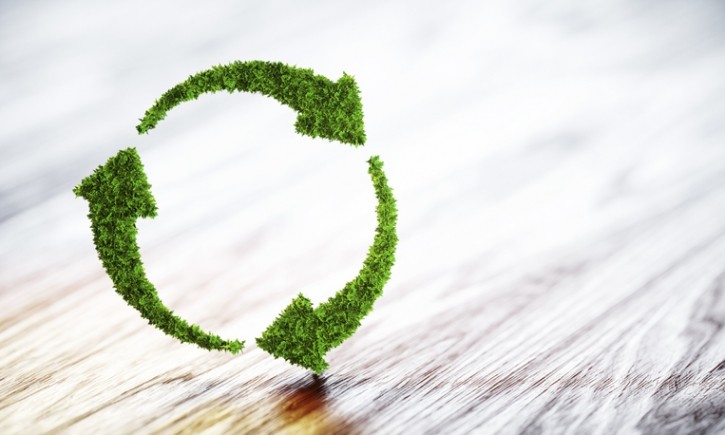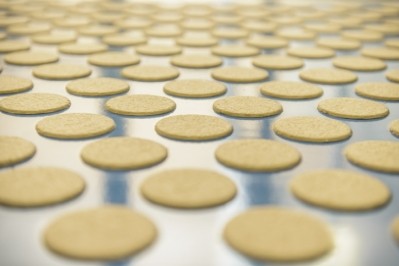Partnerships key to success of circular and sustainable food waste to feed projects in the Netherlands

Successful food waste to feed initiatives in that market include the well-known Kipster egg concept, which was pioneering, and is a concept that has since been expanded to the US.
Using circular feed, a business can very rapidly reduce the footprint of an egg or a pork product, remarked Toine Timmermans, program manager, sustainable Food Chains at Wageningen University & Research (WUR) and director of the Dutch charity, Food Waste Free United.
Speaking at the 10-year anniversary event of the EU Former Foodstuffs Processor’s Association (EFFPA) in Brussels, on October 23: Circular Economy Solutions for Sustainable Food and Feed Production, Timmermans presented on a number of Dutch “value added” circular feeding projects involving retailers and targeted at layer, broiler and pork production, outlining their progress to date.
We caught up with him to hear more about those initiatives.
Firstly, he acknowledged that circular and sustainable feeding concepts might be easier to valorize when it comes to eggs and poultry products compared to pork meat. There are multiple pork cuts and a huge volume of pork production in the Netherlands is produced for the global export market. In addition, the swine industry is under a lot of pressure with reductions in herd sizes in countries such as Germany, the UK, and the Netherlands due to the high feed costs and the African Swine Fever (ASF) outbreak in Asian markets leading to serious reductions in European export volumes.
“So, the swine sector is extremely risk averse right now, and sensitive to any fluctuation in costs,” commented Timmermans.
Food waste targets
Food waste remains a burning issue in the EU, as elsewhere. Nearly 57 million tons of food waste (131 kg/inhabitant) are generated annually in the EU (Eurostat, 2022). By 2030, the EU wants to introduce legally binding targets to reduce food waste. In July, the EU Commission proposed, by 2030, to reduce food waste by 10% in processing and manufacturing and by 30% per capita in retail, food service, and consumption.
Dutch supermarkets are working towards a sector-wide target that is even higher: 50% less food waste by 2030. This can be achieved mostly with measures aimed at waste prevention. Upcycling more of surplus food from supermarket shelves into animal feed is one solution, said Timmermans.
“It will be very challenging for them to reach their target if they don’t utilize some of the unavoidable part of food waste – fruit and vegetables – as animal feed. A common practice for unsold bread.”
To be able to do so, there must be guarantees that such surplus fruit and vegetables are of good quality and safe, that there aren’t any meat residues, and that track and trace systems are in place. There needs to be an effective separation method within the store, one that is easy to implement, is ‘dummy proof’ and can be replicated in stores country-wide, he said.
Long-term agreements
Timmermans has been working over the past few years with an ecosystem of Dutch farmers and retailers, seeing what kind of surplus food to feed concepts are attractive for consumers and scalable, and what’s more, by design, are circular and sustainable.
Partnerships and a high level of trust, along with long-term agreements, are the cornerstone of successful initiatives, continued the food waste mitigation expert.
“We have a few examples now of partnership models that actually work and have shown they have the potential to be scaled such as Kipster, JEGG, Oranjehoen and Zonvarken.”
Kipster
Kipster attracted a lot of attention when it introduced its circular, animal friendly egg production model in the Netherlands in 2017. The first-of-its-kind farm, established in collaboration with WUR experts and NGOs, was designed to cater to the chickens’ natural tendencies and lifecycle. The pillars of Kipster’s model center around using surplus food for feed, lower carbon footprint, and improved animal welfare.
Much of the carbon footprint of an egg depends on the feed. The company, by using waste streams like bakery leftovers - rusk, rice cakes and waffles - for its hen feed, through its partnership with the feed company, Nijssen Granico, claims it can significantly reduce emissions. By avoiding competition for resources between people and laying hens, it addresses feed-food competition. Based on its data for the Netherlands operations in 2022, its feed was nearly 43% lower in carbon footprint than conventional chicken feed.
The company deliberately chose white egg layers, as they reportedly have a lower ecological footprint compared to the brown egg layer. Building on these foundations, the Kipster system was additionally designed to ensure that the birds are provided with high welfare standards, meeting the requirements of the Beter Leven 3 Star assurance scheme. The male chicks and end-of-lay hens are also reared and slaughtered for human consumption, making full use of the entire production cycle
Signing a contract with Lidl helped to stabilize the initiative, noted Timmermans.
US expansion
The Kipster concept has been exported to the US. The organization is approaching its US market expansion in alliance with MPS Egg Farms for production and Kroger for retail.
The MPS Egg Farms operation in Indiana has four hen houses. The first house was finished in October 2022, with eggs from that barn on the supermarket shelves in December 2022. The second house was finished in February 2023 and populated with birds in early March, the third in April and last one in July 2023, Sandra Vijn, managing director of Kipster USA, told us.
The eggs are now at Kroger owned stores in 30 US states and currently retail at $4.99.
The feed comes from a variety of sources, including byproducts from pasta manufacturers, crop processing and animal processing. In terms of feed pelleting, Kipster partners with Kalmbach Feeds, based in Ohio.
"We plan to share the carbon footprint of our US operations in 2024, once we have been able to compile and analyse all the data for 2023," added Vijn.
Next steps for the US project include the introduction of Kipster meat products in 2024, the fine-tuning of the Kipster feed formulation to find low carbon ingredients, and the continuation of the roll-out of eggs, in collaboration with Kroger.
JEGG
Timmermans stressed the need to make the circular system more competitive; along with a focus on innovation, the players must look to shorten the supply chain by evaluating whether any intermediaries can be removed as a way to reduce costs.
JEGG was one of the first Dutch poultry farmers to use processed animal proteins (PAPs) in its feed.
“It has now built its own facility to incorporate PAPs in its laying hen feed, securing a supply contract with Darling Ingredients. In addition, having sourced Black Solider Fly (BSF) larvae from an external provider previously, it is currently in the process of establishing its own larvae growing facility; they will be reared on leftover fruit and vegetable waste from both food processing companies and supermarkets.”
The results in terms of animal welfare improvement are very promising, in combination with a reduction in the carbon footprint of the feed, said Timmermans.
Oranjehoen
In late 2021, meal-kit maker, HelloFresh in the Netherlands, partnered with chicken supplier, Oranjehoen, to repurpose leftover food for chicken feed.
Oranjehoen feeds its chickens residual streams, carrots and beets, from its own farm. The feed gives the chickens a distinct color and taste, allowing the meat to be sold as a premium product.
By collaborating with HelloFresh, Oranjehoen also gets leftovers from that group’s distribution centers (DCs), which arise due to overbuying, quality issues, or product damage during production. Every week, that leftover food is sent directly from HelloFresh’s DC in Bleiswijk to the Oranjehoen farm where it is processed and transformed. “Oranjehoen has now set up its own drying facility to do so,” explained Timmermans.
The meat is then supplied to HelloFresh, boosting the circular process.
Zonvarken
There is swine-based concept as well. Zonvarken was founded in 2018 by four entrepreneurs with backgrounds in farming, genetics, food, and feed production: Rob Nieuwenhuis (farmer), Otto Offenberg (pig genetics), Jeroen Koks (food business product manager), and August Offenberg (animal feed sector).
The pigs at the Zonvarken farm are given a completely circular ration. FeedValid, a company that collects residual flows from, for example, bakeries and supermarkets, supplies a very large part of this ration in the form of old bread and broker crackers.
Moreover, Zonvarken's feed supplier, Voerwaarts, does not use gas in the production of feed. In contrast with most feed producers in the Netherlands, the pellets are 'cold' pressed.
And leading Dutch supermarket chain, Jumbo, recently introduced Zonvarken products in more than 150 stores and as part of its online range.
EFFPA 10th anniversary event
EFFPA's event in Brussels last week brought together 80 participants from the EU Commission, national government representatives, as well as stakeholders from the food and feed chain and academia.
The Commission presented the legislative proposal on setting food waste reduction targets, triggering the need for action by national governments.
Also discussed at the event was the challenge linked to the increasing use of food losses by the biogas sector, materials which could have instead been upcycled into feed.
Speakers from the Spanish ministry of agriculture, FEFAC and VION Group, stressed how key the inclusion of former foodstuffs in feed is for livestock sectors to achieve sustainability goals, but the participants underlined the importance of not compromising on safety requirements.
In his keynote presentation, Professor Luciano Pinotti from the University of Milano outlined how former foodstuffs are especially suitable in feed for young animals like piglets where they can be incorporated at levels up to 30% without negative effect on body weight, daily gain, FCR, or carcass quality compared to cereals-based feed. The high level of fat and the higher glycemic index also favor feed intake.
Former foodstuffs are suitable in feed for finisher pigs, poultry, and dairy cows with positive impact on milk yield, he said. In addition, Prof Pinotti highlighted ongoing research into animals’ behavior in relation to higher levels of caffeine and theobromine in certain former foodstuffs compared to other feed materials, as well as research on possible effects of former foodstuffs on methane emissions in cattle.












